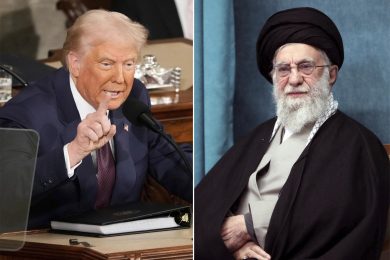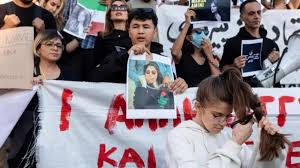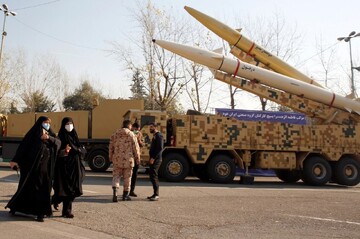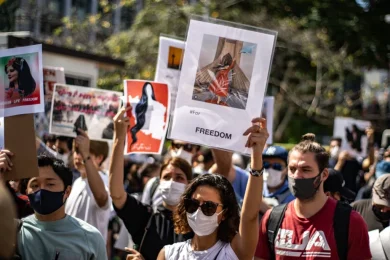In the heart of Iran’s ongoing struggle for freedom, justice, and human rights, one truth is undeniable: Iranian women are leading the revolution. From the bold protest chants echoing in the streets to the digital resistance on social media, Iranian women have become the face and the force of a historic movement. Their bravery in the face of violence, imprisonment, and systemic oppression has turned them into symbols of hope not only for Iran but for oppressed people worldwide.
This report highlights the courageous women who have stood up against the Islamic Republic and its enforcers, including the Islamic Revolutionary Guard Corps (IRGC)—the regime’s most powerful and repressive institution. These profiles in courage show us not only the cost of resistance but also the strength, vision, and leadership Iranian women bring to the revolution.
1. Mahsa Jina Amini: The Spark of a Movement
Mahsa Amini, a 22-year-old Kurdish woman, was arrested by Iran’s “morality police” in September 2022 for allegedly wearing her hijab “improperly.” Days later, she died in custody. Her death ignited one of the largest uprisings in Iran in decades, uniting Iranians across ethnic, class, and gender lines under the rallying cry: “Women, Life, Freedom.”
Mahsa didn’t live to lead a movement, but her death became a symbol of every woman brutalized by the system. Her name is now etched in global memory, and she represents the countless unnamed women whose voices have been silenced.
2. Narges Mohammadi: The Voice from Behind Bars
Narges Mohammadi, a journalist, human rights advocate, and Nobel Peace Prize laureate, has spent years in prison for exposing torture and defending political prisoners—many of them women. Currently incarcerated in Tehran’s notorious Evin Prison under IRGC supervision, Mohammadi continues to write, publish, and speak out from behind bars.
Despite torture, solitary confinement, and a deteriorating health condition, she remains unbowed. Her leadership, even in captivity, reflects the spirit of Iran’s revolutionary women: resilient, articulate, and fiercely dedicated to justice.
3. Nasrin Sotoudeh: The Defender of Freedom
A globally recognized human rights lawyer, Nasrin Sotoudeh has been repeatedly arrested and sentenced to decades in prison for defending women who removed their hijabs in public. Her work has challenged Iran’s judicial system and exposed the gender-based laws used to imprison women and children.
Known for refusing to wear the mandatory hijab even in court, Nasrin’s defiance represents a bold stand against state-imposed identity. Her leadership lies not just in her courtroom battles but in her uncompromising moral stance, making her a beacon for legal reform and women’s rights.
4. Sepideh Gholian: The Relentless Rebel
Journalist and labor rights activist Sepideh Gholian has become known for her fearless defiance of the IRGC. Arrested multiple times, tortured, and forced into televised confessions, she remains unshaken. Upon release from one of her prison stints, she stood in front of Evin Prison and shouted anti-regime slogans, risking re-arrest—and was indeed detained again.
Sepideh embodies the unbreakable will of Iran’s youth. Her bravery continues to inspire a new generation of activists who refuse to be silenced.
5. Masih Alinejad: The Digital Commander
Living in exile, journalist and activist Masih Alinejad has become one of the most influential voices of Iranian resistance. Through her social media campaigns like #MyStealthyFreedom and #WhiteWednesdays, she has encouraged thousands of Iranian women to protest compulsory hijab laws by sharing videos of themselves walking unveiled.
The IRGC has attempted to silence her through threats, smear campaigns, kidnapping plots, and even assassination attempts. But Masih continues to lead a digital revolution, proving that exile is no barrier to resistance when truth is on your side.
6. Atena Daemi: The Prisoner Who Became a Leader
Atena Daemi, a children’s rights activist, was arrested for peacefully protesting executions and criticizing government brutality. During her imprisonment, she suffered solitary confinement and repeated interrogations, but she used her platform to report on prison conditions, speak on behalf of fellow detainees, and demand justice.
Atena’s strength lies in her quiet persistence—an ordinary woman turned into an extraordinary leader by the weight of injustice.
7. Women Protesters: Faces in the Crowd, Leaders in the Streets
Beyond the prominent names, there are thousands of Iranian women who have taken to the streets—many for the first time—tearing off their hijabs, leading chants, organizing strikes, and standing in front of armed forces demanding dignity. From students to teachers, mothers, and athletes, Iranian women have made it clear: this revolution is not about reform—it’s about freedom.
8. Teenage Martyrs: Brave Beyond Their Years
The movement has also seen the rise—and tragic fall—of teenage girls like Nika Shakarami and Sarina Esmailzadeh, who died during protests or in state custody. Their stories shocked the nation and proved that even Iran’s youngest women are willing to risk everything for the future they deserve.
These girls are not just martyrs—they are leaders in memory, icons of a generation that has lost its fear.
9. The IRGC’s Response: Fear of Women’s Power
The Islamic Revolutionary Guard Corps (IRGC), tasked with suppressing dissent and defending the regime’s ideology, has intensified its brutality in the face of women-led resistance. Tactics include:
• Mass arrests and disappearances.
• Torture and sexual violence in prisons.
• Digital surveillance and cyberattacks.
• Smear campaigns against female leaders.
Their fear is rooted in truth: the fall of tyranny often begins with the rise of women. The IRGC knows that and is desperate to hold the line.
10. The Role of Global Solidarity
Iranian women have reminded the world that freedom is universal, and silence in the face of oppression is complicity. International solidarity—through campaigns, sanctions, and asylum—has helped sustain their fight, but much more is needed.
Governments, NGOs, and global citizens must:
• Amplify women’s voices.
• Pressure Iran through diplomatic channels.
• Demand the release of political prisoners.
• Support independent Iranian media and digital resistance.
Conclusion: Women Will Build Iran’s New Future
The women of the Iranian revolution are not simply resisting; they are leading. They are visionaries, organizers, truth-tellers, and fighters. They’re demanding a new Iran built on equality, justice, and freedom.
Their stories—of courage under fire and leadership in chains—should be documented, amplified, and remembered. Because when Iran is free, it will be in no small part because of these women.
Join Our Newsletter!
Stay informed with the latest updates, news, and ways to take action in the fight for justice and global security. Sign up now to get updates delivered straight to your inbox!





